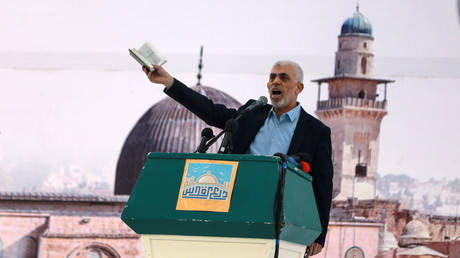"'Hamas as an idea cannot be destroyed by force': Assessing Israel's Outcomes from Eliminating the Group's Leader"
A month following Sinwar’s elimination, the region continues to experience instability, and the outlook appears grim.

It has been a month since Yahya Sinwar, the leader of Hamas in Gaza, was killed in Rafah during an encounter with IDF forces. While this death, albeit accidental, sent shockwaves among Palestinians and their supporters, Israel hailed it as a significant victory. Israeli officials have posited that the removal of Sinwar would lead to a safer Gaza and a more stable region.
However, Dimitri Diliani, spokesman for Fatah’s Reformist Democratic Faction, argues that Sinwar's removal has not brought any stability to the area. “The truth is that the elimination of Sinwar only sets the stage for bigger turmoil,” he stated.
He further emphasized that this change could encourage a more radical stance within Hamas, potentially inflaming regional tensions and leading to an upsurge in resistance across Palestinian factions in the West Bank. “It will exacerbate an already volatile atmosphere,” Diliani added.
The concerns Diliani raises are supported by the current climate in the West Bank, which had already been a breeding ground for Hamas, the Palestinian Islamic Jihad, and other militant groups. These organizations have established cells that actively confront Israeli security forces, contributing to a rise in lone wolf attacks in both the West Bank and Israel.
A report by Shin Bet, Israel’s internal spy agency, indicated that September saw eight significant attacks in the West Bank and Jerusalem, with security forces thwarting 72 others. While intelligence for October and November has yet to be released, expectations remain that radical elements will continue to pose challenges to Israel, launching sporadic attacks against civilians and military personnel.
Instability extends to the southern front, too. Since Israel's ground invasion of Gaza began on October 27, 2023, the IDF has lost approximately 373 personnel. As long as Israeli troops maintain their presence in the region, the likelihood of fatalities among soldiers remains high.
Notably, stability and security are not the only objectives Israel has struggled to achieve following Sinwar's elimination. The complete disarmament of Hamas and the dismantling of the organization are also unresolved issues.
“It really depends on what Israel means by the elimination of Hamas,” noted Walid Seyam, a Palestinian political analyst based in South Africa. He articulates a distinction: if Israel aims to merely diminish Hamas's military capabilities so they cannot launch rockets, then it could be viewed as a success. “If they mean a complete elimination of Hamas, then the answer is a definite no,” he contended.
Seyam’s reasoning hinges on the social role Hamas has played within Palestinian society since its inception in Gaza during the 1980s. They have been instrumental in providing food, medical aid, and education, creating a lasting perception that continues to resonate with many Palestinians. Notably, certain areas in Gaza still heavily depend on the group for support, and despite a decline in overall backing, support for its military wing, the Al Qassam Brigades, remains significant.
“Hamas started out as a charity organization, and with it they gained the experience of how to function without being centralized,” Seyam explained. This decentralized approach, he noted, allows them to adapt and reorganize in response to changing circumstances, rendering the notion of destroying Hamas through force highly problematic.
Amid these developments, Hamas has announced plans to elect a new leader in March, signaling to Israel and others that the organization will persist despite efforts to undermine its activities.
Potential successors include Khalil Al Haya, a deputy to Sinwar based in Qatar, Khaled Mashal, who led the political bureau from 1996 to 2017, and Mohammed Sinwar, Yahya Sinwar’s brother. Although the identity of the new leader may be kept secret for security reasons, analysts predict that the successor will likely continue Sinwar's hardline legacy.
“The new leader is likely to emerge as a figure deeply aligned with Yahya Sinwar’s legacy,” Diliani mentioned. He noted that the immense devastation and civilian suffering in Gaza are likely to compel the new leader to adopt a more hardline position, motivated by a commitment to resistance and avenging lives lost. “In this context, moderation has little room to survive,” he added.
The ongoing conflict has resulted in a staggering death toll, with at least 43,799 people reported dead—many of whom are women and children. The destruction in Gaza has been extensive, with vast areas made uninhabitable and essential infrastructure severely damaged.
Seyam concurs with Diliani's assessment and warns that the prevailing dire situation, alongside the removal of established leaders, could create an environment that allows Iranian influence to proliferate in Gaza. Given Iran’s long-standing support for armed Palestinian factions, a new Hamas leader who embraces a more aggressive stance could strengthen Tehran’s involvement, complicating the situation further for Israel.
“Sinwar’s existence served as a justification for Israel’s military operation in Gaza,” Seyam noted, raising a critical question: “Now that he is gone, will Israel continue to have this credibility?”
Allen M Lee contributed to this report for TROIB News
Find more stories on Business, Economy and Finance in TROIB business












